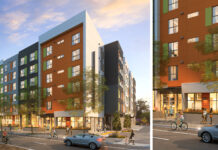 SALEM, Ore.: “Flipping” homes – purchasing a house, fixing it up and selling it again within six months for a profit – may be down in Oregon, but the profits are up.
SALEM, Ore.: “Flipping” homes – purchasing a house, fixing it up and selling it again within six months for a profit – may be down in Oregon, but the profits are up.
According to the latest data from RealtyTrac, there were 949 single-family home flips in the first half of 2013 in Oregon. Each home was purchased at an average price of $187,391. When they were resold again a few months later, sellers banked more than $37,000 in profit.
That’s a 47 percent decrease in homes flipped from the first half of 2012. But although flipped homes last year were losing money, flipping homes this year is proving to be profitable. And the return for Oregon investors – 20 percent – was much better than the 9 percent national average.
Nationwide, more than 136,000 homes were flipped in the first half of 2013. The average gross profit off these homes was $18,391.
Flipping homes not only provides a profit to sellers, but it also helps add overall value to a neighborhood and can be a way to breathe new life into old homes.
“For the most part, these are flippers who are actually adding improvements to the property rather than just relying on home price appreciation,” said Daren Blomquist, vice president at RealtyTrac. “In Oregon, the metrics were even more indicative that the flippers are adding value to improvements.”
The ideal home for the practice would be inexpensive with easy cosmetic fixes, said Byron Hendricks, president of Prudential Real Estate in Salem. His company doesn’t participate in home flipping, but brokers will frequently partner with investors to help identify promising neighborhoods and homes.
“I think sometimes that prepping the property for re-sale is as simple as some cosmetic work and very minor repair issues,” he said. “There’s other times where it can be tremendously involved; think of contaminated houses with substantial rot issues or structural issues. It takes a skilled person to estimate how much it will cost in repairs.”
Flipping can become especially popular – and profitable – when home prices are rising, and quickly.
“Home flipping was at an outlandish peak when prices were shooting up so much,” Hendricks said. “The gambling that occurred when prices were running high paid off well.”
“I think what it tells us about the market is that the market is healing,” said Blomquist. “Flipping is a way to bridge the gap between distressed housing markets and a much more healthy and vibrant market. As long as it’s a short-lived trend. We wouldn’t want to see flipping continue year over year because that would be a sign of a market that’s overheated and highly speculative.”
It is, after all, gambling. Flippers rely on the ability to sell the home at a higher value than purchased in order to make the effort worth it, and that doesn’t always pan out.
“Things that are worth it usually take some work,” Hendricks said. “I really applaud this effort and I love to see people doing it and doing it with integrity and making money off it because it makes our communities a better place.” -AP






